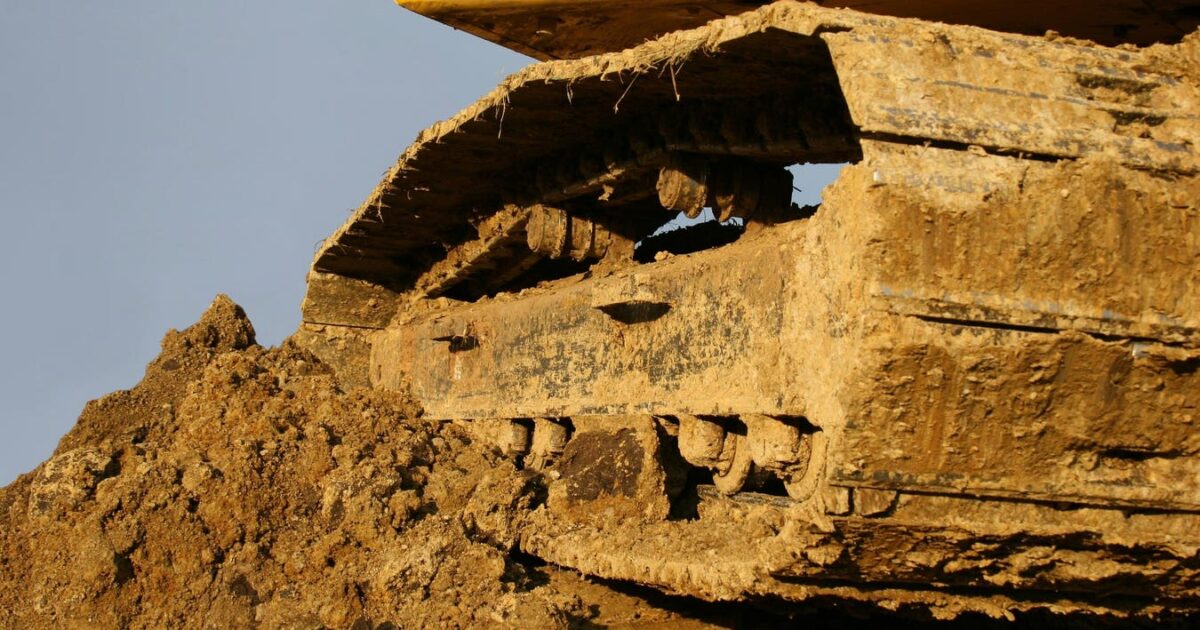Granite Demos Show Green Excavation Power For AI Data Centers

Bulldozer on pile of dirtOther construction images:
In a canyon accompanied by trailers and vehicles, a few dozen people wearing hardhats are watching a Cat 307.5 excavator at work cutting through hard stone.
They’re witnessing the Earthgrid company’s Plasma Excavation System (PES) where the colossal machine, equipped with two 2500-kilowatt plasma torches, makes a clean border through granite.
It’s an exciting display, and it represents some of the biggest work being done in renewable tunneling and excavation processes
The Environmental Impact
Why does this kind of innovation help save the planet and reduce climate impact?
For one thing, it makes it easier to put in things like powerlines and utilities underground, decreasing wildfire risks in certain parts of the country that are experiencing severe conflagrations and resulting property damage, as well as harmful emissions.
The electric tunneling process replaces dirty diesel equipment, and explosives, which typically have their own impact.
There’s also the potential to do earth moving in a different way that’s less intrusive.
All of this combines to make Earthgrid’s process very interesting to people who want to improve what we do with infrastructure.
CEO Troy Helming was present at Davos talking about the need for such kinds of renewable activity.
He’s also been vocal about the breakthrough that the company is celebrating now.
“(Our recent) developments illustrate a clear step in proving our TBR model and its potential to rapidly connect our underground electrical and fiber optic grid safely. No company has ever tried boring through rock with more than one plasma torch – much less through rock like greywacke or granite,” Helming said in a press statement around the process of innovation. “We are excited to deploy our two-torch system on several upcoming customer projects.”
Coming Up
On June 27, the company celebrated a Sierra Granite demo event in Raymond, California.
The company chose the spot for its geology and its cache of White Sierra Granite.
Helming describes the process this way:
“It’s a robot with two lightsabers up front, just sort of vaporizing through rock and soil, with a Mandalorian jet pack on the back, blowing out all the little bits of rock, cornflake-sized bits of rock,” he said. “And it can go so fast and so much cheaper than anything else out there, it’s the power grid, transmission lines, our water pipelines, fiber… there are so many communities that don’t have access to highspeed bandwidth. ..”
That’s one way that the green process will serve our need for energy in a future high-tech age, but here’s another:
Right now, innovators and big money partners are looking for ways to build out energy sources for large AI data centers. How this gets done is a big question in terms of environmental impact.
“As AI continues to grow rapidly, we’re working on even better ways to cool servers efficiently, reduce water usage, and push sustainable, green computing forward,” says Johnson Eung at Supermicro, a top company working on server design.
Together, many of these stakeholders will be looking to improve the ways that we usher in the most powerful IT systems ever to exist. That’s probably a big deal.

